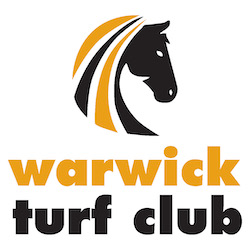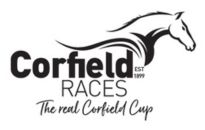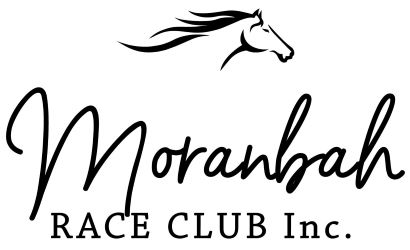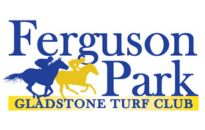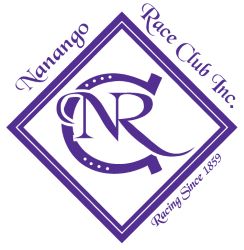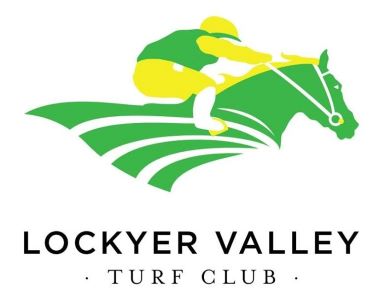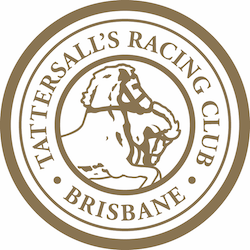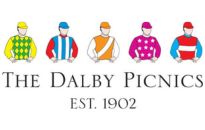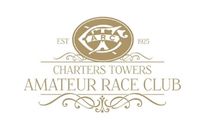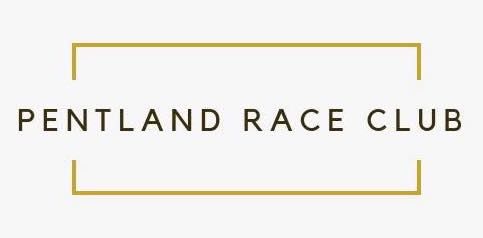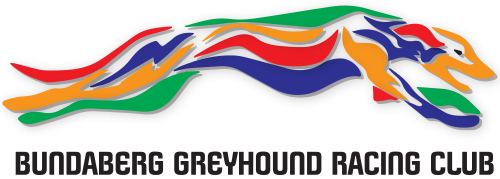
Tales Of The Past: Paternal powers behind home state achievers
Cover photo: Black Piranha (Tye Angland) winning the 2009 Stradbroke. (Photo: Ross Stanley)
By Ross Stanley
With the Queensland Racing Carnival being the centre of racing’s galaxy this month, it is timely to look back over examples of the state’s stallions and studs that have figured in top tier conquests.
The most recent example was Apache Chase’s BRC Kingsford-Smith Cup. He was produced by the mating of Lyndhurst Stud’s stallion Better Than Ready and Silken Whisper, the American mare owned by Eureka Cambooya Thoroughbreds.
This parentage linked two of the foremost Queensland nurseries and is one of countless A-Graders to be born on the Darling Downs.
LYNDHURST
Malcolm Septimus McDougall and his wife Blanche settled at Lyndhurst near Warwick in 1875. Among their 10 children was Charles Edward, the 10-year-old who was destined to be a driving force in building up the property’s thoroughbred and Shorthorn cattle enterprises.
Ladurland (GB), one of the first of the imported stallions, sired three Queensland Derby sash bearers between 1909 and 1913. More joy ensued through the efforts of Syce (GB), Chantermerle (GB) and Seremond (GB).
Best of all however was the selection of The Bastard (GB), a Dante horse whose monicker was swiftly changed to The Buzzard.
The 1926 son of Spion Kop (Ire) and Valescure (GB), that oozed with credentials through his sire and his ancestors Spearmint and Carbine, begot 42 stakes-winners that amassed 117 stakes wins. The Heroic mare Sequoia was transported from South Australia for the mating that came up with the Rainbird, the 1945 Melbourne Cup victress.
After Charlie’s passing in 1923, the Queensland Turf Club quickly instituted the C.E. McDougall Stakes for early juvenile fillies in acknowledgement of his excellent contribution to the turf. Charlie’s brother Jack (John Graham, 1875-1955) became the new studmaster.
In the period 1944-1956, Perc and Ted Kruger, aside from their family’s saw-milling business, operated City View Stud just to the east of Bundamba railway station. They too invested in northern hemisphere bloodstock with the likes of the Stardust entire One Up (Ire) and Iran (GB).
The brothers were dissatisfied with the level of success so they relocated to Lyndhurst in 1956. Percy’s descendants Merrell, Jeff and Griff Kruger have continued the tradition.
During and beyond his lifetime, Smokey Eyes was a cornerstone of Lyndhurst and Queensland racing in general.
The eye-catching chestnut by Stardust (GB) was champion stallion of Australia in terms of races won by his offspring for 12 consecutive seasons from 1961-62 to 1972-73.
The asset was bought from Victoria at the right moment because his southern progeny started to shine with New Statesman (1961 Victoria Derby, 1962 Oakleigh Plate) displaying versatility.
Also, Star Kingdom, Stardust’s other outstanding offspring, hit the ground running with Todman bathing in brilliant limelight in 1957.
Half a century ago, Charlton Boy (Smokey Eyes-Miss Copley) prevailed in the 1974 BATC Doomben 10,000 and the 1972 J.T. Delaney Stakes that has morphed into today’s Kingsford-Smith Cup.
Four years later Scomeld, a double product of Lyndhurst with its stallions Smokey Eyes and Lysander II on her pedigree page, claimed the QTC Marlboro (now J.J Atkins) Stakes) and the VRC Oaks.
Smokey Eyes stood tall in the Oaks. His successful representatives were Aspalita (1963), Kulali (1965), Bright Shadow (1968) and Eye Shadow (1964), the dam of the 1972 winner Meanmi Shadow.
His Derby success stories were supplied by Intrepid Clipper (1969) and Amby’s Love (1971), the Lysander II gelding from the Smokey Eyes mare Perfumed Smoke with ancestry in the City View days through Iran and Solvieg.
The Bundaberg galloper Red Smoke in 1962 was another Smokey Eyes colt to join the Doomben 10,000 honours list.
More recently, Rothfire by Rothesay at Lyndhurst won the 2020 J.J. Atkins Stakes.

EUREKA
Eureka Stud at Cambooya has been blessed with longevity with four generations of the McAlpine family in key managerial roles. Andy, the patriarch, had cut his teeth as stud groom at Edward Lauderdale Ramsay’s nearby Banchory Stud. He has been followed by Colin, Scott and his wife Grania, their sons Harry and Angus and Scott’s Melbourne based sister Jenny.
There are many families like the McAlpines where the relay baton is passed from generation to generation is the common template. It is in the blood. It would not surprise if, soon after birth, they whinny before they can cry.
Lumley Road (GB)’s stalwart son Grey Affair picked up the 1977 Doomben Cup, 1979 Brisbane Cup and six other features beyond 2000m.
In the 2014 Doomben 10,000, the Sequalo entire Spirit of Boom and his half-brother Temple of Boom, by Piccolo, filled the quinella. The lads from the Special Dane mare
Temple Spirit were separated by half a neck.
Semipalantinsk and Temple Black were the parents of Temple Spirit’s dam Temple Top. So, apart from Lyndhurst’s Sequalo, the other three males were all Eureka residents.
Temple of Boom was placed in two Doomben 10,000s and finished second in a Stradbroke renewal. The bay gelding grabbed Group 1 glory in 2012 The Galaxy at Randwick.
Show A Heart, supreme in the 2002 Stradbroke for breeder-owners Ross and Judy Cutts, was by Eureka’s Brave Warrior from Miss Sandman, the mare by their 1983 Castlemaine (now J.J. Atkins) Stakes first placegetter Regal Advice.
The 2006 Derby winner Ice Chariot (Semipalantinsk-Snow Chariot) was bred by his trainer Ron Maund.
The 2010 Oaks winner, the millionairess Tinto, was deeply Eurekan. The Red Dazzler filly, foaled by Brave Warrior’s daughter Truly Brave, was bred and part-owned by Grania McAlpine.
Earlier, the 1956 Queensland Oaks went to Urgona and the 1951 Doomben 10,000 and QTC Sires Produce Stakes were hits for Coniston.
Their respective sires Urgay and St Constant both worked in Eureka’s breeding barn. The latter downed all except Buzalong in the 1938 Caulfield Cup.
Mr Sunray (St Constant-Scimitar by Spearfelt) was on top in the 1947 QTC Sires Produce Stakes.
Other results involving players from Eureka are the 1982 Oaks, courtesy of Mother of Pearl by Rascolnik (GB) from Mink and Pearls and the 2003 edition of the J.J. Atkins Stakes won by Picady, a son of Piccolo and the Semipalatinsk mare Our Today. Both broodmares have links to Aloe (Ire).
The exploration of Brisbane’s top bracket events decided since the War continues below. The names of several others studs and stallions will be mentioned multiple times.

MORE STRADBROKES
The Daily Telegraph’s post-AJC Doncaster report on April 6, 1945, stated that “Jockey Garnet Bougoure knew a few things about (the winner) Abbeville that the stable didn't know”.
When the bay gelding had raced earlier in Toowoomba under the name Little Arty, Bougoure was his stable attendant.
“He liked being scratched behind the ear. Garnet used it as an unfailing cure for Arty’s occasional fit of the sulks. Arty liked loaf sugar. Garnet always carried a lump or two in his outside coat pocket. At strapping time every morning Arty would nose in the pocket for it.
Young Garnet rode Arty early on and learnt that he liked being talked to at the barrier and at times throughout a race, needed a tight rein as he settled into stride, hated being crowded and would tolerate the waving of the whip but not being struck.
Bougoure was trying his luck in Sydney and watched Abbeville, competing for new connections, fail because of the way he was being handled.
In short, Garnet was aboard for the Doncaster victory because jockey Jack Thompson sacked him, the horse’s owner listened to his advice and the Queenslander followed his own script.
He met “Arty” again for the first time in the Randwick mounting yard. He called him by his old name, scratched him behind the ear and “there are witnesses to the fact that the horse began to nose at his jacket pocket”.
The partnership also saluted at 14/1 in the 1946 Stradbroke. Bougoure proceeded to flourish in Europe and Singapore, taking out Irish and English classics and Asian features.
Interestingly, Abbeville’s sire Palfresco stood at Arnold Wienholt’s Washpool Farm in the Kalbar-Aratula area. When he scored in the 1935 Caulfield Cup, the runner-up was Buzalong, a stayer by The Buzzard from Saccharine, the daughter of another Queensland sire in Highfield.
Wiseland, Bougoure’s 1942 Doomben Cup winner was by the talented Wise Force that served at the property called Dulacca West near Miles. The master there was Jack McDougall’s nephew Don McDougall.
Lucky Ring gathered up back-to-back Stradbrokes in 1949 and 1950 and second money in the 1949 Doomben 10,000 for trainer Norm Conquest and his jockey son, Ron.
The sprinter that was also adept on Albion Park’s sand was by Laureate (1941 AJC Derby) from The Buzzard mare Queen Buzz.
In 1943, Laureate was purchased for 800 guineas by the Queensland studmaster, Fred Martin for his Olinda Stud at Kumbarilla near Dalby

Bernborough’s sire Emborough was to the fore when his son Wedborough got away with the 1952 Stradbroke Handicap. Earlier in 1949, the Doomben 10,000 went to Ungar, the sire of Wallgar. The latter, the 1960 Stradbroke winner for Tom Doyle, first saw light of day at Rosalie Plains at Oakey.
Tom’s father Con collected the 1967 Stradbroke with Mister Hush. He was by Rush from Winya who, in turn, was from Silk Gown, the Emborough mare that was Spearfelt’s grand-daughter. Winya's sire was Wattle Brae Stud's versatile stallion Passing Glance.
Rush and Rego Lad, the sire of the 1978 winner Innisfree, were managed by Carl Waugh. He was the master of Rushlands and Bellfields on the Downs and a founding father of the Golden Nugget and Magic Millions ventures.
Sir Wisp (1977) was by Belgrave Square (Ire) from the Smokey Eyes mare Streaming Smoke. The band of owners voted narrowly to run in the signature sprint rather than the Welter on the same card.
Tony Mazzaglia’s charge, with apprentice Glen Killen on top, sailed along the rail and stunned punters at 100/1. Some connections were also shocked with the outcome. They had dressed casually and had to watch the presentation from the outside.
Monashee Mountain (Ire) coupled with the dam of La Montagna (2006 Stradbroke) after shuttling to Willow Bend at near Beaudesert.
On her maternal side, the Group 1 winner’s first five dams were all bred at Wattle Brae at Pilton where Tom, Ray and Gary Turkington all had terms as studmasters.
Black Piranha, the 2008-09 Stradbroke hero was by another Willow Bend stallion in Clang (1995 STC Silver Slipper Stakes). His key progeny includes Clangalang (2003 AJC Derby, Epsom Handicap) and Calaway Gal, the 2002 Golden Slipper winner whose name has replaced C.E. McDougall’s in the race she won on debut.
Shane Chatway and Shane Sutton were offered $1million for their Umatilla colt Top Echelon after he had finished fourth in the Sires Produce Stakes and ran second to Lovely Jubly in the 2002 version of J.J. Atkins Stakes.
The bid was rejected. The grey was retired soon after with a tendon injury. There was some joy when his son River Lad accounted for its 2014 Stradbroke rivals. Natalie McCall saddled up the bay. Her father Ray McCall had been Top Echelon’s Caloundra conditioner.
With genetic endowments by Nijinsky, Northern Dancer, Secretariat, Kingston Rule, Vain and Gunsynd’s sister Sunset Sue, Top Echelon’s bloodlines were appealing. He was on the roster initially at Stan and Marilyn Johnston’s Craiglea Stud at Kenilworth and is now at Oakwood Farm outside Ipswich.

MORE BRISBANE CUPS
Prestbury studmaster Murray Counsell bred Mode (1971 Oaks, 1972 Brisbane Cup). The little Aloe (ire) filly raced in his wife Beryl’s name.
Her 1972 Cup triumph, when she defied the imposing Dalray (NZ) chestnut Tails, meant that Canning Downs had a hand in the breeding of the quinella because Dalray’s daughter Rising Fashion was Mode’s dam.
Tails also chalked up the 1968 Queensland Derby and the 1971 Doomben Cup, a plum that was also picked by Rising Fashion’s brother High Society a decade earlier.
Mode’s white and blue livery was carried to victory by Murray’s filly Mian Mir in the 1954 Oaks. The bay, by the resident stallion Jungle King (GB), was also born at Southbrook near Toowoomba. Her dam, Voeseen, was by the Canning Downs sire Rivoli.
The 1950 Cup was acquired by The Buzzard gelding Silver Buzz, a member of one of the state’s most famous families. The female side traces back through Biddy’s Robe (Seremond-Merle’s Robe), Chantemerle, Microbe and the Newbold mare Microphone to the excellent tap root mare Sound. She was the dam of the prolific winner Megaphone. This clan is related to the stellar performers Molly’s Robe and her son Mollison.
Blue Boots, in 1947, was another with a taste of local quality with The Buzzard, Seremond and Syce all in his family tree.
MORE POST WAR DOOMBEN 10,000s
The legendary Bernborough (Emborough (GB)-Bern Maid) pulled off an unforgettable Doomben 10,000-Cup double in1947. The national idol was foaled at Rosalie Plains near Oakey.
Falvelon, was sired by Glenlogan Park’s Alannon. His dam Devil’s Zephyr was by Lyndhurst’s Zephyr Zing. The dasher bred by Brian Falvey was first home in the 2001 and 2002 Doomben 10,000s. In the latter, Show A Heart was second and so the order of that year’s Stradbroke duel was reversed. Sadly, Falvey passed away before his horse had gone into work.
Unequalled, victorious in 1993, was a thorough Wattle Brae Stud product by Captain Piper from the Claudius mare Blue September. The grand-dam Blue Way was by Pandour. She threw the 1981 QTC Sires Produce Stakes winner Faustina.
1976 was Burwana’s turn. The speedster was by Todman’s son Todwana. The game Queenslander dead-heated for second in the 1965 Doomben 10,000 after garnering the 1964 QTC Sires Produce Stakes and the 1965 Delaney Quality, a contest that his son Todonic also won in 1982.
Rimveil (1941 AJC Epsom, 1940 Villiers Stakes), the sire of the 1950 Ten Thousand winner Rim Boy, served at A.E. McDougall’s Stonyhurst property at Kaimkillenbun near Dalby.
The mating of The Buzzard and the Highfield mare High Benia gave life to the 1947 winner. Syce’s appearance on the distaff side added another Queensland dimension.

MORE DOOMBEN CUPS
In 1983, the well-connected Lord Seaman relished his lightweight and justified Alan Bermingham’s selection process.
The hobby breeder at Argyle Lodge at Beaudesert operated with Bletchingly’s three-quarter brother Seaman (Todman-Coogee).
Coogee also dropped Beaches, the Melbourne Group One sprinter that sired Beach Boy, the five times stakes-winner that was placed in the 1982 Ten Thousand.
Another relative in Behistoun (FR) won the Washington International and the Prix Lupin Prix Ganay.
In 1969, Dual Control was another grand advertisement for Wattle Brae. The classy chestnut was by Pandour from the Passing Glance mare Lennora who in turn was by Hebrus from Pinda D.
Earlwood (1958 Derby, 1958-1959 Doomben Cup) was bought as a Boxwood foal at foot by Milmerran’s Bill Jones, the principal of Wodonga where Bore Head (1967 Doomben Cup, 1965 Caulfield Cup) was born.
The colt’s dam was a sister to Buzalong and therefore linked to The Buzzard and Highfield.
The 1951 winner Gay Felt was from the Spearfelt mare Eve Felt while the sire Emborough also fathered seven Toowoomba Cup winners.
In 1948, jockey Graham Cook’s father Frank landed the Cup with Forge. His sire Hebrus was based at Redfield Stud Goondiwindi 1931. He was closely related to Heroic.
MORE QUEENSLAND DERBIES
The 1987 laurels went to the Black Zephyr (NZ) filly Princess Gracious, the granddaughter of the Boxwood mare Raheen’s Girl, a mare bred by Basil Nolan.
Minto Crag, the 1967 Blue Riband recipient, was by Piping Rock, the stallion by Queen Elizabeth II’s Aureole, that Charles Hope installed at Cotswold Hills near Toowoomba in 1950.
The 1940s bristled with homemade goods.
Basha Felika (1949) was by The Buzzard from the Rivoli (1922 AJC Derby) mare Perfect Morn.
Blue Slipper (1948) was also by The Buzzard with Seremond and Syce in the maternal half.
Sefiona (1947) was by Seven Fifty (1938 QTC Sires Produce Stakes). His brother Six Fifty scored in the 1936 Derby. The duo, named for their cost prices, were by The Buzzard from Syce’s daughter Stable Girl. Te Tana (1946) was by Mr Standfast.

MORE QUEENSLAND OAKS
Maltmaid (1951) was by Malt Denis from the Corban mare Anniversary. Spearfelt was also involved on the female half.
Lady Hannah (1952) was by the dual Ascot Gold Cup-winner Probation, that served at Pat Jennings' Alma Vale Stud.
Ton (1960) was Canning Downs royalty through Dalray and Chez Dior and other Queensland pedigree page stamps from Maytown, Rivoli, Highfield, High Force and Molly’s Robe.
Ryeleah (1967) was by Ryecroft (Ire), a resident of Alma Vale near Greenmount on the Downs from The Buzzard (GB) mare Hecarte.
Kazan Retto (1969) was by Brimstone (GB). The sire of the 1958 Melbourne Cup winner Baystone served in breeding sessions in New South Wales and Queensland.
THE J.J. ATKINS STAKES
The metric mile for two-year-olds has been tagged as Group 1 since 1985.
Mossman (1998) was by Success Express (USA). Peter and Wendy Moran stood the bay at their Noble Park Stud (now Telemon) near Beaudesert.
Lovely Jubly won the Sires-Atkins double in 2002. The grey was by the grey Lion Hunter based at Oaklands Stud near Toowoomba. She became the dam of the brilliant grey Chautauqua.
Although the BRC Sires Produce Stakes is now a Group 2 event, it certainly has been a coveted prize.
The relevant list of winners includes Charlton Boy (1971), Regal Adventure by Court Command (1966), Joliffe by The Magistrate (1962), Ivanhoe by Smokey Eyes (1961), Refulgent by Dalray (1960), Duchesne by Jungle King (1956), Malarno by Captain Fox at Alma Vale (1955), Thurlow by Passing Glance. (1954), Rayland by Rivoli (1947) and Gay Stand by Mr Standfast at Alma Vale (1946).
It is no surprise to note so many Queensland linkages. Back in the day, eligibility to run depended on the juvenile’s sire being nominated.
TATTERSALL’S TIARA (formerly Winter Stakes)
Both of the Group 1 winners were prepared by Brisbane trainer Kelly Schweida.
Miss Cover Girl (2016) was by Monashee Mountain from Show A Heart’s Tolart with Sea Road from Fred Brown’s Glen Avon Lodge filling the role of maternal great-grand-sire. Nova Star (2007) was by Oaklands Stud’s Iglesia.
Below, the pre-War period is extremely briefly visited.

THE DISTANT PAST
Although racing was originally more sporting than industrialised in nature, the pioneering participants were keen to spend to improve the quality of the bloodstock.
The Derby specialist Joshua Peter Bell, who set up The Grange in the present day Ipswich suburb of Raceview in 1874, was a very strong supporter as was James McGill, the principal of the adjoining Blaxlands Stud. His major success story was Fitz-Grafton.
Another prominent figure was John Finnie at Drayton on the Downs. At his small Rosevale Stud, Sound apparently had 14 foals.
J.H.S. Barnes arrived at Canning Downs in 1917. Highfield’s sons Highland (1925-1926 Stradbroke Handicaps, 1928 Cox Plate) and High Syce (1927 Queensland Derby, 1929 Caulfield Cup) proved popular.
Another key stallion was Bachelor's Persse at Harrow Stud at Cambooya. His champion named Lough Neagh was born in 1928. Another of his marvels was Regular Bachelor arrived three years later.
Spearfelt (1924 Victoria Derby,1925 VRC St Leger, 1926 Melbourne Cup) was a wonderful competitor over ground that the Victorians discarded as a stud venture.
After moving to the Sunshine State, the influence of the descendant of Carbine, Spearmint and Spearhead was immense.
His progeny included Ajax’s conqueror, Spear Chief (1937 Derby, 1938-39 Brisbane Cup, 1939 Rawson Stakes ), Spearace (1939 Derby), Brown Lance (1938 Doomben Cup), Dark Felt (1943 Melbourne Cup winner born at Alma Vale), Glen’s Spear (1934 Queensland Derby, 1937 Brisbane Cup ) and Lord Spear (1941 Queensland Derby).
Clearly, the data shows that the Darling Downs has been and continues to be the main hub and haven for the state's breeding industry.
A CLOSING YARN
Last year’s victor in the Sires was the Rex Lipp trained Cifrado. He is by Encryption, the Lonhro stallion that is on Eureka’s roster. The juvenile had to survive a protest.
After Cairns resident Cliff Little staked $26 and won $40 million in a Lotto draw, he thought a racing interest would be one way of enjoying his windfall. He is a hands-off character and left the yearling selection entirely with the Toowoomba horseman.
Little parted with $350,000 at the Magic Millions for a horse that boasts Derby winners Octagonal and Camerana and speedy conveyances in his ancestry. Raheen Stud’s Basil Nolan bred the dam Madam Fly, a daughter of Excites.
Cifrado has grossed $1.4 million to date.
Lipp had won the event with Star Shiraz in 2004. The Sequalo filly from the Semipalatinsk mare Starshine Express missed by a head in the T.J. Smith (now J.J. Atkins) Stakes.
Hopefully the current Queensland crop of stallions will continue to chalk up elite successes. Maybe Cliff Little will continue to play with his money. It does pay to be a tad lucky in this game.
POST SCRIPT
The 2024 Queensland Derby hero, the War Decree (USA) gelding Warmonger (NZ), has some Queensland bloodline connections.
Like the 2019 Queensland Oaks heroine Winning Ways, his paternal grand-sire is War Front (USA). His maternal ancestors include Eureka Stud’s stalwart stallion Semipalantinsk.
